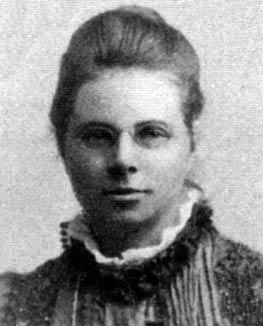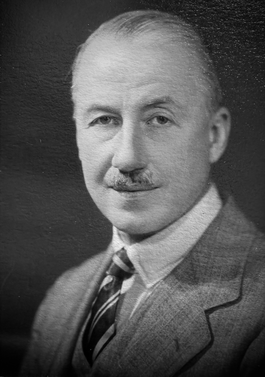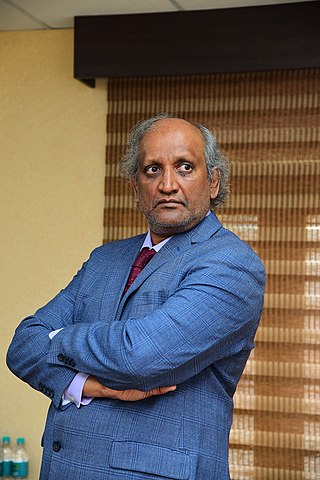
Sir Edmund Taylor Whittaker was a British mathematician, physicist, and historian of science. Whittaker was a leading mathematical scholar of the early 20th-century who contributed widely to applied mathematics and was renowned for his research in mathematical physics and numerical analysis, including the theory of special functions, along with his contributions to astronomy, celestial mechanics, the history of physics, and digital signal processing.
George Neville Watson was an English mathematician, who applied complex analysis to the theory of special functions. His collaboration on the 1915 second edition of E. T. Whittaker's A Course of Modern Analysis (1902) produced the classic "Whittaker and Watson" text. In 1918 he proved a significant result known as Watson's lemma, that has many applications in the theory on the asymptotic behaviour of exponential integrals.

Cargill Gilston Knott FRS, FRSE LLD was a Scottish physicist and mathematician who was a pioneer in seismological research. He spent his early career in Japan. He later became a Fellow of the Royal Society, Secretary of the Royal Society of Edinburgh, and President of the Scottish Meteorological Society.

Andrew Gray was a Scottish physicist and mathematician.
In mathematics, an integro-differential equation is an equation that involves both integrals and derivatives of a function.

William Gregory FRCPE FRSE FCS was a Scottish physician and chemist. He studied under and translated some of the works of Justus von Liebig, the German chemist. Gregory also had interests in mesmerism and phrenology.
Ahmed I. Zayed is an Egyptian American mathematician. His research interests include Sampling Theory, Wavelets, Medical Imaging, Fractional Fourier transform,Sinc Approximations, Boundary Value Problems, Special Functions and Orthogonal polynomials, Integral transforms.

John Gray McKendrick FRS FRSE FRCPE LLD was a distinguished Scottish physiologist. He was born and studied in Aberdeen, Scotland, and served as Regius Professor of Physiology at the University of Glasgow from 1876 to 1906. He was co-founder of the Physiological Society.

Hilda Phoebe Hudson was an English mathematician who worked on algebraic geometry, in particular on Cremona transformations. Hudson was interested in the link between mathematics and her religious beliefs.
Kermack–McKendrick theory is a hypothesis that predicts the number and distribution of cases of an infectious disease as it is transmitted through a population over time. Building on the research of Ronald Ross and Hilda Hudson, A. G. McKendrick and W. O. Kermack published their theory in a set of three articles from 1927, 1932, and 1933. While Kermack–McKendrick theory was indeed the source of SIR models and their relatives, Kermack and McKendrick were thinking of a more subtle and empirically useful problem than the simple compartmental models discussed here. The text is somewhat difficult to read, compared to modern papers, but the important feature is it was a model where the age-of-infection affected the transmission and removal rates.
The McKendrick–von Foerster equation is a linear first-order partial differential equation encountered in several areas of mathematical biology – for example, demography and cell proliferation modeling; it is applied when age structure is an important feature in the mathematical model. It was first presented by Anderson Gray McKendrick in 1926 as a deterministic limit of lattice models applied to epidemiology, and subsequently independently in 1959 by biophysics professor Heinz von Foerster for describing cell cycles.
Thomas Ferguson FRSE CBE was a Scottish surgeon and Professor of Public Health from 1944 to 1964 at the University of Glasgow. Much of his early writing and philosophy paved the way for the National Health Service in Britain after the Second World War.

Lieutenant-Colonel William Frederick Harvey CIE FRCPE FRSE was a Scottish expert on public health, serving for many years improving conditions in India.
William Ogilvy Kermack FRS FRSE FRIC was a Scottish biochemist. He made mathematical studies of epidemic spread and established links between environmental factors and specified diseases. He is noteworthy for being blind for the majority of his academic career. Together with Anderson Gray McKendrick he created the Kermack-McKendrick theory of infectious diseases.
Charles George Lambie FRSE MC was a physician of Scots descent. He was the first doctor in Europe to use insulin in the treatment of diabetes. He came to later fame in the University of Sydney. Short of stature he was affectionately known as Wee Mon by his students.
Dr John Souttar McKendrick FRSE (1874-1946) was a Scottish physician from the eminent McKendrick family. He served as President of the Royal College of Physicians and Surgeons of Glasgow in 1939.
Dr Peter Laird McKinlay FRSE FSS was a Scottish medical statistician. His report on the effects of milk on schoolchildren brought about the introduction of Free School Milk in British Schools from the Education Act 1944.

Lt Col Alexander Dron Stewart IMS CIE FRSE FRCPE FRCSE MID LLD (1883–1969) was a 20th-century Scottish physician and public health expert associated with India.
Prof Robert Stevenson Thomson FRSE FFPSG (1858–1905) was a 19th-century British physician.

Sivaguru S. Sritharan is an American aerodynamicist and mathematician.








